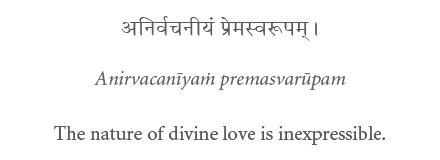In Step with the Heavenly Beat
An Account of Gurumayi’s Birthday Celebration
Shree Muktananda Ashram
June 23 – 24, 2015
Part VII

As we sang Shri Mahalakshmyashtakam with Gurumayi, the Temple was once again filled with the sacred sound of mantras. Anyone who has participated in a satsang with Gurumayi will be keenly aware that Gurumayi never allows us to remain in our familiar comfort zone for too long. As a Guru, as a teacher, Gurumayi's intention and mission are to ensure that students, devotees, disciples, seekers, and followers wake up to their own great Self and make steady progress on the path.
 There was absolute focus combined with pure delight.
There was absolute focus combined with pure delight.Just when our singing reached a crescendo in the final verse, we received another ambrosial surprise. Gurumayi continued singing, leading us in a dynamic call and response of Mahalakshmi namo’stute, “Salutations to you, Mahalakshmi! I bow to you!”
What a glorious musical offering we were all making in worship of the divine Shakti! The myriad qualities of all eight forms of Shri Mahalakshmi were invoked within everyone in the Temple. I had the full conviction that each of the participants would continue to experience the fruits of singing this magnificent hymn with Gurumayi, in their daily lives at home and in their offering of seva.
Just when I thought nothing could be better than this, I saw Gurumayi’s hand gesturing for me to sit by the microphone closest to her chair. I immediately knew what this meant: Gurumayi was inviting me to join her in singing an alap, a melodic improvisation! As everyone else continued singing Mahalakshmi namo’stute, Gurumayi sang a phrase in the raga and I responded with another phrase. Back and forth we sang, our voices playfully spiraling high and low, creating a multilayered tapestry of sound. I felt I had entered a timeless space in which I was no longer the doer—I was literally the instrument of her grace.
At the peak of this marvelous chorus, as Gurumayi sang “namo,” she lengthened the “o” sound into “AUM.” Gurumayi raised her arms and with a circular gesture, invited everyone to join in singing the primordial sound AUM. As our voices merged with Gurumayi's voice singing the sacred syllable, I felt that this eternal mantra was carrying Gurumayi's blessings and love out into every corner of the universe. I thought that every sentient being and insentient object must surely be rejoicing in some way, on some level, in recognition of our beloved Guru's birth—for the power of the mantra and the Guru's grace transcend time and space.
With the reverberations of AUM lingering in the air, Gurumayi asked the musicians to play Om Namo Bhagavate Muktanandaya in the Dhani raga. As the harmonium began, Gurumayi said, “Yes, that's it! Dhani raga to honor the amazing rain and thunder that we witnessed.”
In Indian classical music, the ragas—or melodic patterns—are associated with particular rasas as well as with natural cycles such as seasons and times of day. Dhani raga evokes great happiness, and is associated with the golden-green rice crops that appear after the seasonal rains begin.
 This evening the heavens had opened and graced us with a cosmic vision, and in honor of that vision we adorned the earth with the steps of our dance and the sounds of our voices. Singing and dancing, our praise uplifted the earth, and the earth beamed her smiles at the heavens.
This evening the heavens had opened and graced us with a cosmic vision, and in honor of that vision we adorned the earth with the steps of our dance and the sounds of our voices. Singing and dancing, our praise uplifted the earth, and the earth beamed her smiles at the heavens. 
In celebration of the birth of our beloved Shri Gurumayi, we had the great good fortune of participating in this mahapuja orchestrated by the heavens. I did my best to ensure that my mind, my heart, and my voice were fully present for this divine worship. Everything that took place both within me and in everyone who was in the Temple was so much more than any words in any language could encapsulate and articulate. Perhaps this is why in the Narada Bhakti Sutras, the sage Narada says:

Borrowing the sage’s word, I would like to say that our experience was anirvachaniyam, “inexpressible.”
 As she began waving the sacred flame before Bade Baba's murti, we heard Gurumayi's voice singing the opening notes of Jyota se Jyota Jagao in the key of A-flat—six steps higher than we usually sing it! Did I say before that we had reached the peak? Gurumayi always takes us to a new destination. I had the distinct experience that in that key, it was not we who were singing, it was the voices of the spheres.
As she began waving the sacred flame before Bade Baba's murti, we heard Gurumayi's voice singing the opening notes of Jyota se Jyota Jagao in the key of A-flat—six steps higher than we usually sing it! Did I say before that we had reached the peak? Gurumayi always takes us to a new destination. I had the distinct experience that in that key, it was not we who were singing, it was the voices of the spheres.






